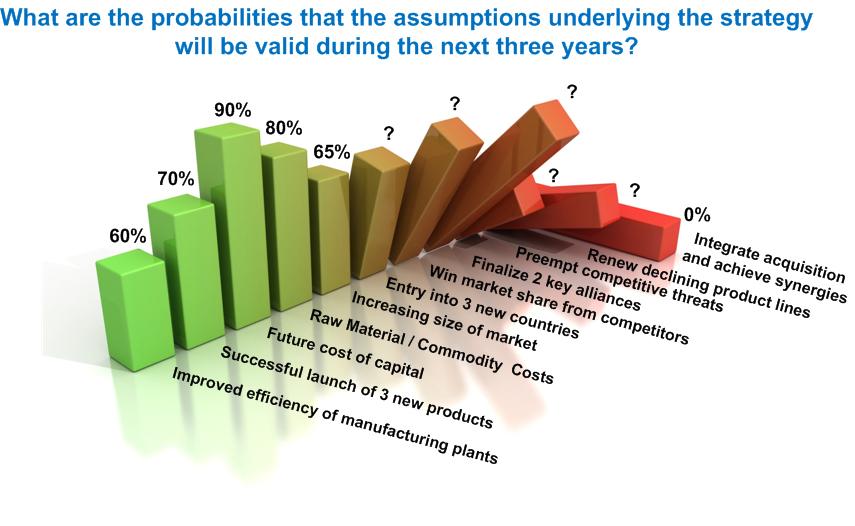Assessing the Probabilities of Key Components of the Business Strategy
Diagnostic 3: To what degree are the assumptions underpinning the business (or brand or functional) strategy still valid?

There is a persistent danger that once the strategy is formulated, we can become complacent about continuing to challenge its relevancy. It is as if the assumptions, bar charts, and optimistic projections of positive future growth have taken on a life of their own and are quietly accepted as a given. As a consequence, we treat them as if they all have 90% probabilities of actually occurring.
Are the major assumptions underlying the elements of the business strategy still reasonably valid? When reality deviates significantly from the strategy, at what point do we need to make major adjustments to our business strategy and execution or do we go to "Plan B?" Do we even have a "Plan B?"
For a business or function with an existing strategy, revisiting the probabilities assumed for each of the key assumptions of the business strategy can be revealing. Adapted from techniques associated with probabilistic decision making in business, having the new executive's team make their underlying assumptions and their probability of occurring explicit serves several diagnostic purposes.
We may be surprised or alarmed at:
- The confidence level (as reflected in the probability) in our ability to predict future events.
- The incomplete or dated information that serves as the foundation for these assumptions and projections.
- The infrequency with which we update or refresh the information.
- The overall low probability that all of the key assumptions will actually occur - and how vulnerable the strategy might be.
- The thresholds at which key assumptions of the strategy are not being met and the indicators that the business strategy needs to be significantly modified or we shift to a different scenario in "Plan B."
This diagnostic tool or line of questioning can be applied either in Wave 1 or Immersion, but from our experience it tends to be more typical of the Immersion Stage.
Links to a Sample of Diagnostic Tools
3. Assessing the Probabilities of Key Components of the Business Strategy (Current Page)
###
Wiznami Corp. is an a senior executive coaching service based in Naples, Florida.

